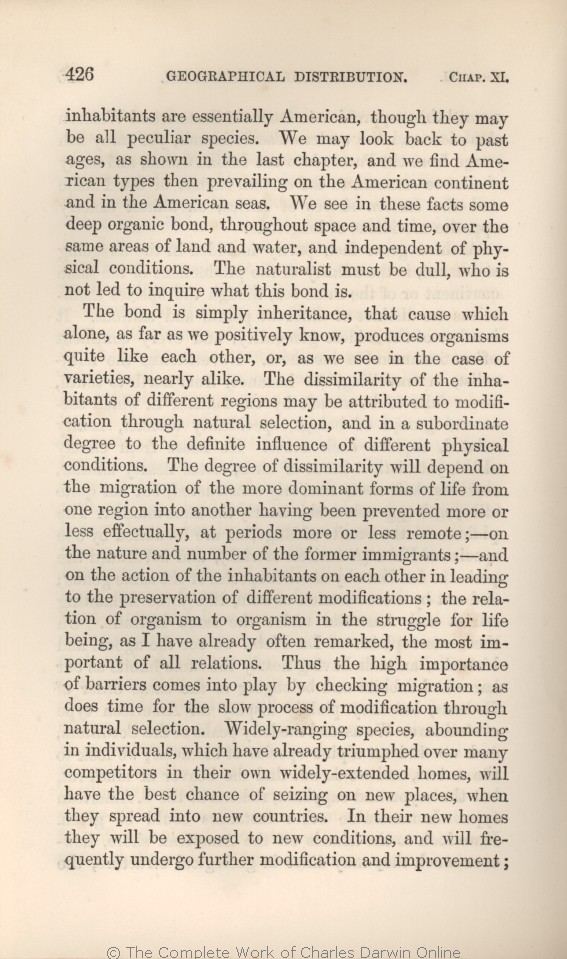inhabitants | inhabitants 1869 1872 | | inhabitants, 1859 1860 1861 1866 |
| are essentially American, though 1869 1872 |
| though 1859 1860 1861 1866 |
| species. 1869 1872 | | species, 1859 1860 1861 1866 |
| ..... 1869 1872 | | are 1859 1860 1861 1866 |
| ..... 1869 1872 | | essentially 1859 1860 1861 1866 |
| ..... 1869 1872 | | American. 1859 1860 1861 1866 |
| prevailing 1869 1872 | | prevalent 1859 1860 1861 1866 |
| ..... 1869 1872 | | prevailing 1859 1860 1861 1866 |
| and 1859 1860 1861 1866 1869 | and 1872 |
| independent 1859 1860 1861 1866 1869 | | independently 1872 |
| ..... 1869 1872 | | their 1859 1860 1861 1866 |
| be dull, 1869 1872 |
| feel little curiosity, 1859 1860 1861 1866 |
|
The | The 1869 1872 | | This 1859 1860 1861 1866 |
| bond 1869 1872 | | bond, 1859 1860 1861 1866 |
| OMIT 1869 1872 |
| on my theory, 1859 1860 1861 1866 |
| like 1869 1872 | | like, 1859 1860 1861 1866 |
| each other, or, 1869 1872 |
| or, 1859 1860 1861 1866 |
| varieties, 1860 1861 1866 1869 1872 | | varieties 1859 |
| alike. 1869 1872 |
| like each other. 1859 1860 1861 1866 |
| natural 1859 1860 1861 1866 1869 |
| variation and natural 1872 |
| in a 1869 |
| in a quite 1859 1860 1861 1866 |
| probably in a 1872 |
| definite 1869 1872 | | direct 1859 1860 1861 1866 |
| degree 1859 1860 1861 1866 1869 | | degrees 1872 |
| prevented 1869 | | effected with 1859 1860 1861 1866 | prevented 1872 |
| effectually, 1869 | | ease, 1859 1860 1861 1866 | | effectually prevented, 1872 |
| immigrants;— 1859 1860 1861 1869 1872 | | immigrants; — 1866 |
| the 1869 1872 | | their 1859 1860 1861 1866 |
| of the inhabitants on each other in leading to the preservation of different modifications; 1869 1872 |
| and reaction, in their mutual struggles for life;— 1859 1860 1861 1866 |
| in the struggle for life being, 1869 1872 |
| being, 1859 1860 1861 1866 |
| homes, 1861 1866 1869 1872 | | homes 1859 1860 |
|









